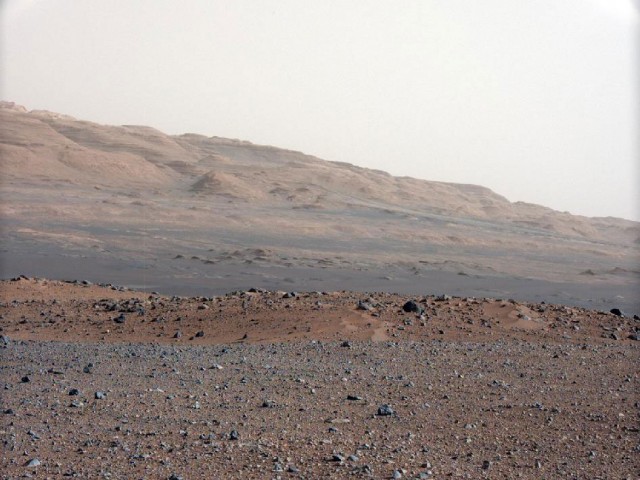No methane, but evidence for a far thicker Martian atmosphere
Ars Technica » Scientific Method 2012-11-05

The first tests for methane performed by Curiosity have come back negative. At least during the rover's first weeks on Mars, any methane present in the air above Gale Crater was at levels lower than five parts-per-billion. But the scientists studying the Martian atmosphere haven't come away disappointed. Detailed measurements of the isotopes present in the first samples indicate that the Martian atmosphere was once much thicker, which may help explain the past existence of liquid water on its surface.
The data come from Curiosity's Sample Analysis at Mars, or SAM instrument. Among other items, this contains a laser spectrometer, which can identify the chemicals present in the sample, and a mass spectrometer, which can identify their weights. The latter can also separate individual isotopes of elements. The data has also been cross-correlated; in a few cases (like CO2), the laser spectrometer can pick out the presence different isotopes, and check the ratios it obtains against those from the mass spectrometer. The readings were also tested against gasses trapped in a meteorite that was blasted off the surface of Mars and fell to Earth. So, we have a really good idea that all the instruments are operating well.
And, so far at least, those instruments are not picking up any methane. As of right now, the researchers operating the instrument put the upper limit on its presence at five parts-per-billion. They expect that limit to drop simply by statistically aggregating multiple measurements. That probably rules out much in the way of large, active sources on Mars at this moment, because it only takes about three months for Mars' atmosphere to evenly mix. But past evidence of methane suggests it might be released both locally and seasonally. So, the scientists are being quite cautious, and simply saying they haven't detected any methane within Gale Crater.
Read 7 remaining paragraphs | Comments